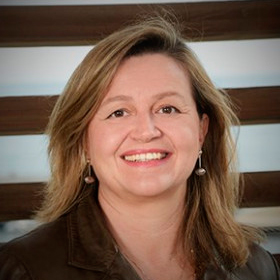Kaleidoscope Gema Revuelta
4. Kaleidoscope
COVID-19: Chronicle of a message not foretold

Gema Revuelta, profesor in the Departament of Experimental and Health Sciences and director of the Studies Center in Science, Communication and Society (CCS-UPF)
In the early days of the COVID-19 outbreak, in January and February, in Europe we’d reached halfway in the story of Peter and the Wolf. Not only had we no experience of an epidemic of this magnitude, but also, although mathematical models, since the turn of the century, had repeatedly warned us that the wolf might come at any moment (mad cow-2000, SARS-2003, avian flu-2005, swine flu-2009), most of us thought he probably wouldn’t. So, to the scientific uncertainty of the moment - reflected in widely varying risk estimates - we need to add the effect of past experiences on how we perceived the threat. For whatever reason, the information that did the rounds during the first few months of 2020 can essentially be summed up in two messages: 1. A new, but remote epidemic has appeared and 2. It doesn’t seem to be much worse than the flu. At that time, the scientific community, in interviews with the media or networks, mostly supported this view.
In early March, the example of Italy and the mounting cases in various regions in Spain, were signs that our situation had changed. And so began a period of blatantly contradicting messages. Social networks and the graphical representation of big data allowed political sectors and opinion leaders, using information provided by scientists from a range of different disciplines (virologists, mathematicians, epidemologists, IT experts, etc.), to bombard us with shocking graphs which spread like wildfire across enormous swathes of a population hungry for information. Comparisons (countries with other countries, regions with other regions) became the focus of the debate. Also added into the mix was the effect of another new media phenomenon: media hoaxes and fake news. Faced with the mass of controversies pouring out from everywhere doubts abounded over what and who to believe.
Also added into the mix was the effect of another new media phenomenon: media hoaxes and fake news. Faced with the mass of controversies pouring out from everywhere doubts abounded over what and who to believe
Aside from the state of alarm, the official discourse was radically altered. At that point, the message could now be summed up as: 3. The situation is very serious, 4. We have a collective mission: to flatten the curve. At that point, in the world of communication, new voices came onto the scene which until now had remained quiet: those of the healthcare professionals. Doctors and nurses related their first-hand experiences, deeply concerned with the situation they were beginning to deal with, which they feared would become too much for them. This seems to have had a strong impact on public opinion, unsurprisingly given that opinion studies place them at the top of the list of professions that inspire credibility. People’s doubts, far from being allayed, grew, and the country’s attention flitted from one issue to another: the situation of ICUs and nursing homes, the lack of ventilators and tests, the masks.
In recent weeks, the health situation has improved (5. we have pushed down the curve is the new message) and that has likely moderated our need for information. Now the media focus has shifted to the measures for coming out of lockdown and the concern for the short and long-term future (6. The new normal).
Over these months we have grown used to contradictions and using multiple sources and channels to obtain information
Over these months we have grown used to contradictions and using multiple sources and channels to obtain information. Each one of us has our own perception of the situation, largely depending on how and with who we are sharing information. Strangely there has been a surge in TV viewing, which, according to analysts, does not only owe to the fact that we are spending so much time at home, but also because, for many, television instills more confidence than a Tweet. Right now, there are dozens of researchers across the world analysing the communication of COVID-19, but we’ll have to wait a little while yet, before we find out if we’ve learnt anything along the way.
